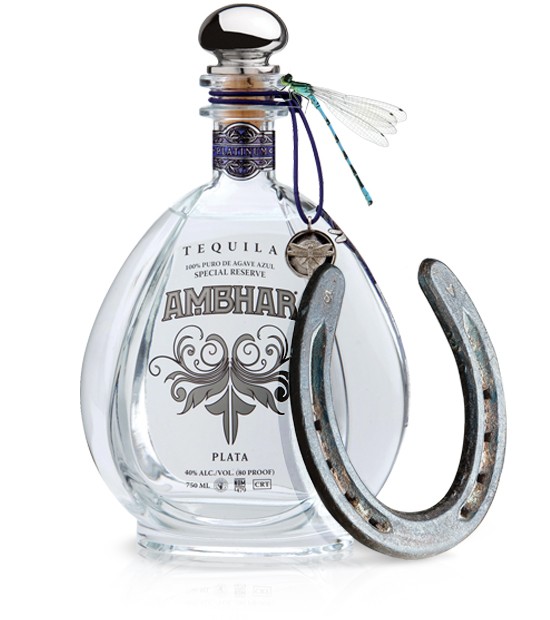
Because I get so many pitches from public relations people whose approach to their career is to employ the steamroller approach to e-mail communication (“Dear Food Writer and/or Blogger”), it's hard to remember which clueless human megaphone sent me the e-mail about Ambhar tequila. I do know that, as with nearly all the non-targeted e-mail I get, I threw it out as soon as I glanced over it. It was the usual rah-rah spiel, this time about some new tequila.
New tequilas are about as newsworthy as the opening of a Starbucks. “It's distilled five times for exceptional purity and smoothness,” crowed this particular press release.
Then I was walking through a liquor store and I saw it, so I–do I dare admit this to the ravening hordes of public relations people?–picked it up and looked at it. It is, indeed, distilled five times. It has a jewel-like clarity (and it had damn well better with a foofy name like “platinum”). It was in a very nice-looking, surprisingly heavy bottle.
So I bought it. I plunked down $35.99 of my corporate overlords' money and I took it home and I opened it and I drank some.
]
The taste was light and, indeed, very smooth; so smooth that if I'd been served this tequila blindly, I would have thought someone was pranking me. It lacked the earthy burn that tequila connoisseurs crave; it had very little body. To put it bluntly, it tasted like agave-flavored vodka, because that's what it is.
See, here's the thing: you can take absolutely any fermented beverage in the world and distill it over and over. Each time you distill it, you remove more of the esters that provide flavor and more of the tiny particulate matter that gives the drink its heft. When you distill wine, you produce brandy; when you distill corn, rye or wheat mash, you get moonshine, or white lightning–unaged whiskey.
Nearly every distilled spirit in the world is distilled twice, three times at most. The first distillation removes impurities that don't contribute to a good taste. Fermented agave that's been distilled once is called ordinario if it's destined to become tequila, shishe if it's destined to become mezcal; it's only after the second distillation that it becomes tequila or mezcal.
Some tequilas are distilled three times; Corralejo is the most popular triple-distilled brand, though Corzo, Tres Generaciones and Casa Noble are also distilled three times. This is fodder for bar room sniping in Jalisco–one tequilero in the highlands town of Arandas sneered of Corralejo, “They didn't get it right the first two times, so they had to try again.”
The better question is, is there a point to distilling tequila five times? Possibly, if you're trying to appeal to the type of people whose tipple of choice is $50-a-bottle vodka shaken with ice and garnished with the olive output of a small Sicilian villiage. It's a very, very small step from, say, Ketel One to Ambhar; there's an agave nose that disappears once it's swallowed. If I were designing a way to move people from overpriced vodka to good tequila, I could see Ambhar as one of the stops along the way.
As a tequila on its own merits, though? Rascuache–crap. Expensive crap, too. If you're going to spend $36 on a bottle of tequila blanco, buy 7 Leguas for $35, Arette for $38, or lay out a little extra and pay $45 for a bottle of Fortaleza blanco.
Follow Stick a Fork In It on Twitter @ocweeklyfood or on Facebook! And don't forget to download our free Best Of App here!

